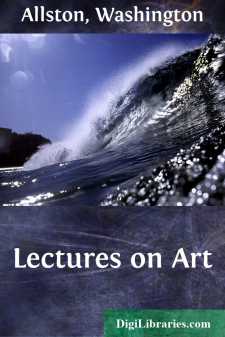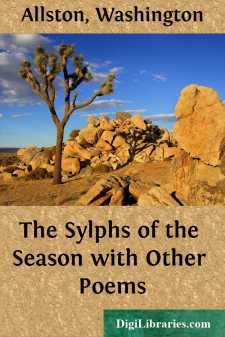Categories
- Antiques & Collectibles 13
- Architecture 36
- Art 48
- Bibles 22
- Biography & Autobiography 813
- Body, Mind & Spirit 142
- Business & Economics 28
- Children's Books 14
- Children's Fiction 11
- Computers 4
- Cooking 94
- Crafts & Hobbies 4
- Drama 346
- Education 46
- Family & Relationships 57
- Fiction 11828
- Games 19
- Gardening 17
- Health & Fitness 34
- History 1377
- House & Home 1
- Humor 147
- Juvenile Fiction 1873
- Juvenile Nonfiction 202
- Language Arts & Disciplines 88
- Law 16
- Literary Collections 686
- Literary Criticism 179
- Mathematics 13
- Medical 41
- Music 40
- Nature 179
- Non-Classifiable 1768
- Performing Arts 7
- Periodicals 1453
- Philosophy 64
- Photography 2
- Poetry 896
- Political Science 203
- Psychology 42
- Reference 154
- Religion 513
- Science 126
- Self-Help 84
- Social Science 81
- Sports & Recreation 34
- Study Aids 3
- Technology & Engineering 59
- Transportation 23
- Travel 463
- True Crime 29
Lectures on Art
Description:
Excerpt
Lectures on Art.
Preliminary Note.
Ideas.
As the word idea will frequently occur, and will be found also to hold an important relation to our present subject, we shall endeavour, in limine, to possess our readers of the particular sense in which we understand and apply it.
An Idea, then, according to our apprehension, is the highest or most perfect form in which any thing, whether of the physical, the intellectual, or the spiritual, may exist to the mind. By form, we do not mean figure or image (though these may be included in relation to the physical); but that condition, or state, in which such objects become cognizable to the mind, or, in other words, become objects of consciousness.
Ideas are of two kinds; which we shall distinguish by the terms primary and secondary: the first being the manifestation of objective realities; the second, that of the reflex product, so to speak, of the mental constitution. In both cases, they may be said to be self-affirmed,--that is, they carry in themselves their own evidence; being therefore not only independent of the reflective faculties, but constituting the only unchangeable ground of Truth, to which those faculties may ultimately refer. Yet have these Ideas no living energy in themselves; they are but the forms, as we have said, through or in which a higher Power manifests to the consciousness the supreme truth of all things real, in respect to the first class; and, in respect to the second, the imaginative truths of the mental products, or mental combinations. Of the nature and mode of operation of the Power to which we refer, we know, and can know, nothing; it is one of those secrets of our being which He who made us has kept to himself. And we should be content with the assurance, that we have in it a sure and intuitive guide to a reverent knowledge of the beauty and grandeur of his works,--nay, of his own adorable reality. And who shall gainsay it, should we add, that this mysterious Power is essentially immanent in that "breath of life," by which man becomes "a living soul"?
In the following remarks we shall confine ourself to the first class of Ideas, namely, the Real; leaving the second to be noticed hereafter.
As to number, ideas are limited only by the number of kinds, without direct relation to degrees; every object, therefore, having in itself a distinctive essential, has also its distinct idea; while two or more objects of the same kind, however differing in degree, must consequently refer only to one and the same. For instance, though a hundred animals should differ in size, strength, or color, yet, if none of these peculiarities are essential to the species, they would all refer to the same supreme idea.
The same law applies equally, and with the same limitation, to the essential differences in the intellectual, the moral, and the spiritual. All ideas, however, have but a potential existence until they are called into the consciousness by some real object; the required condition of the object being a predetermined correspondence, or correlation....



